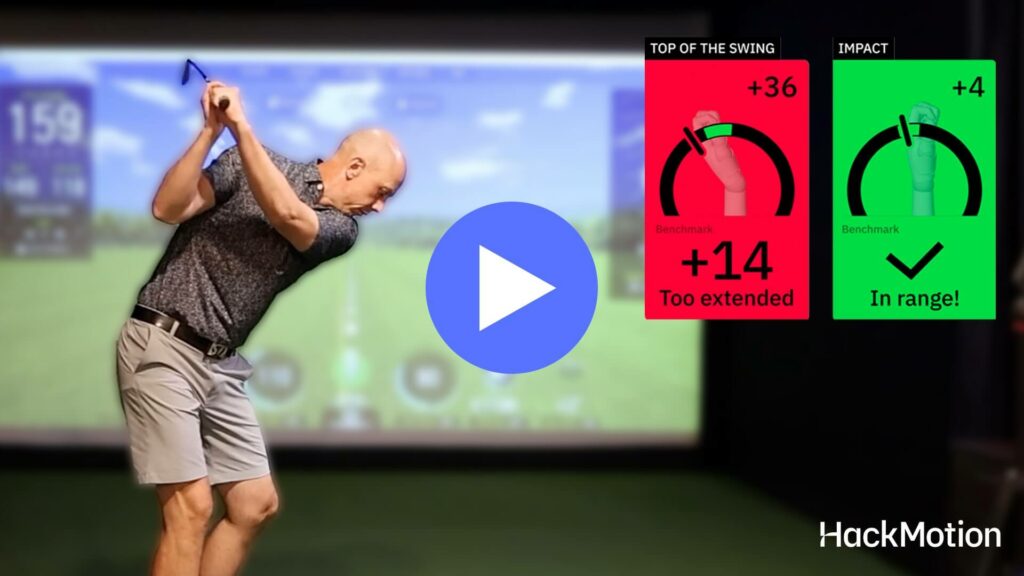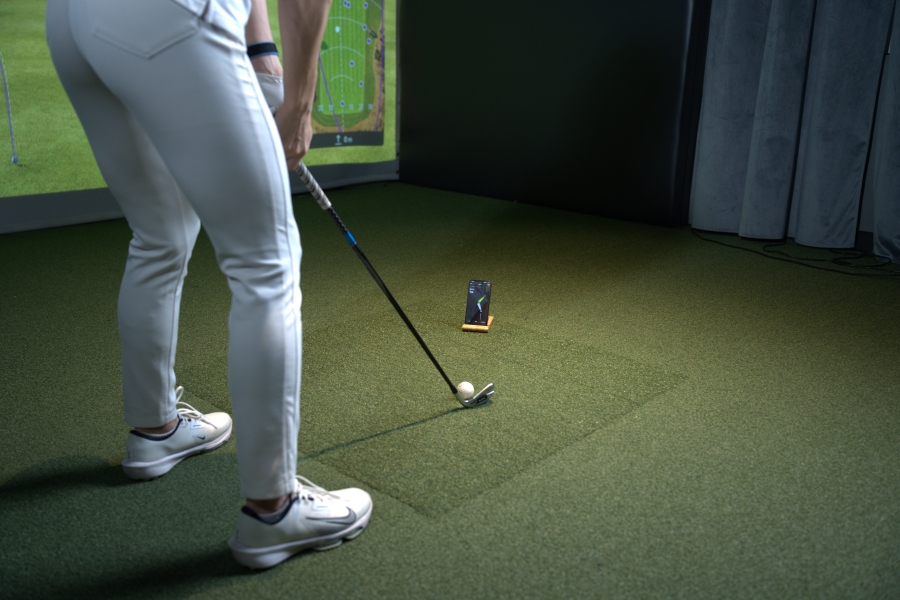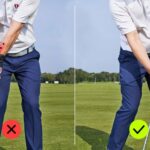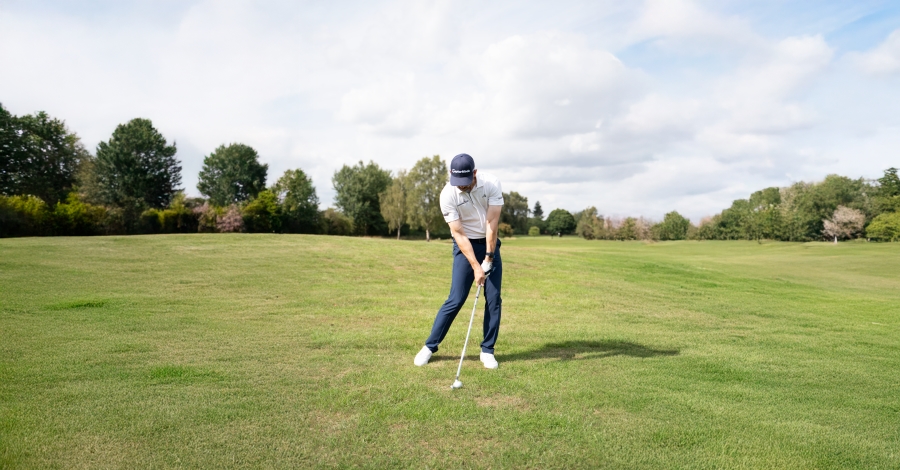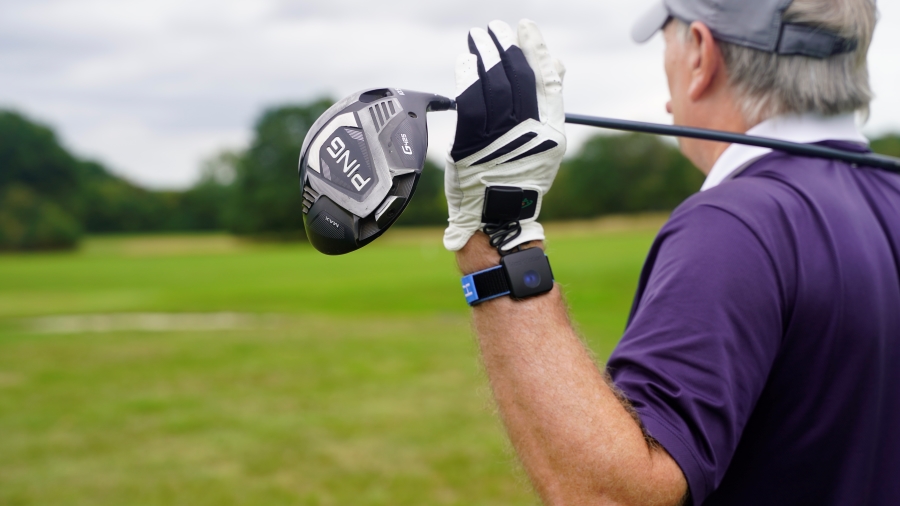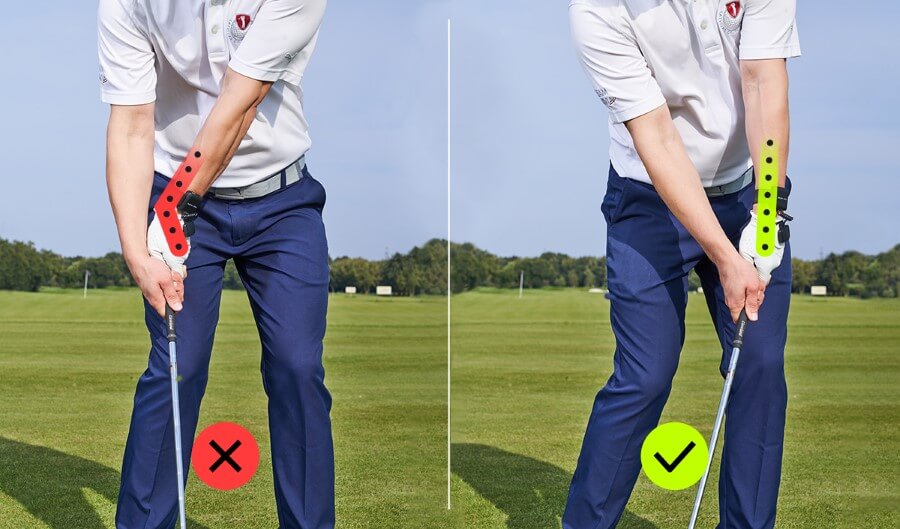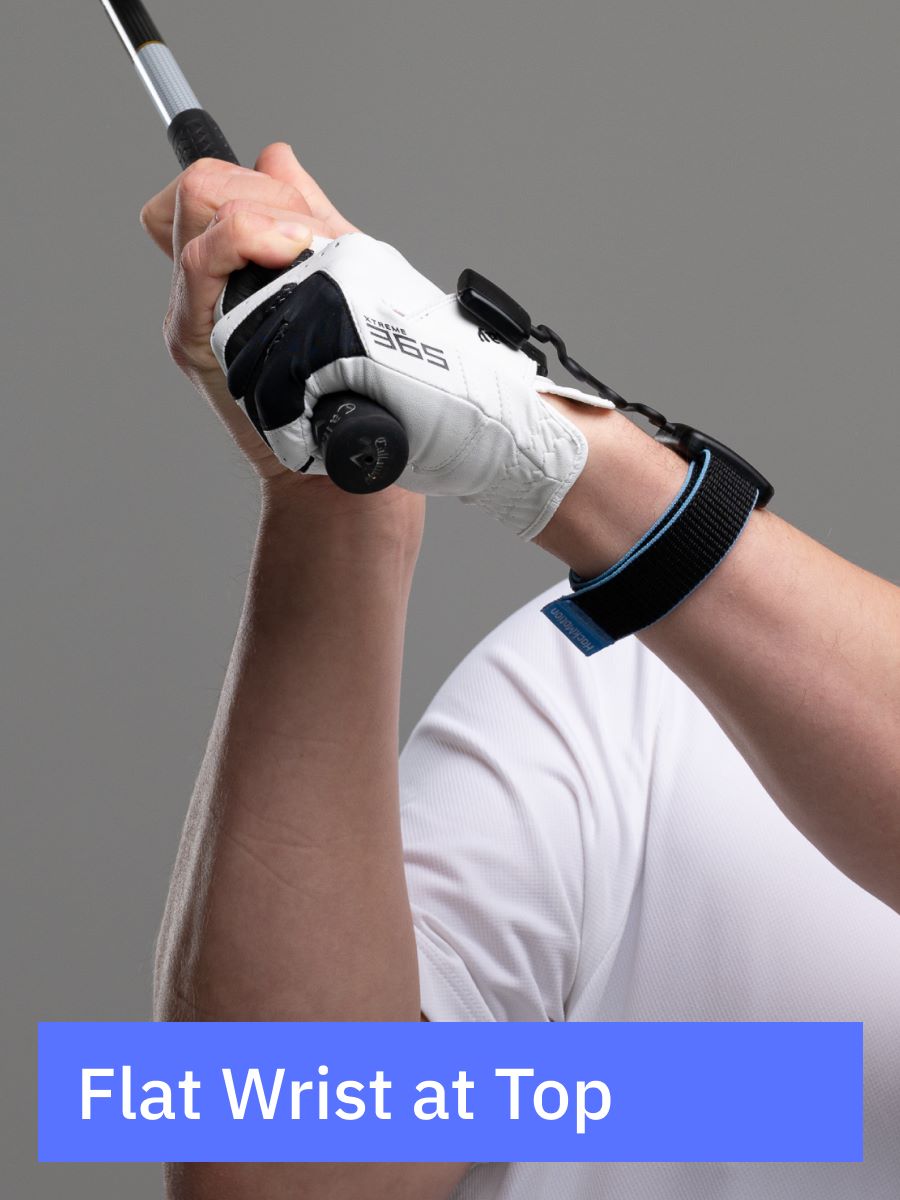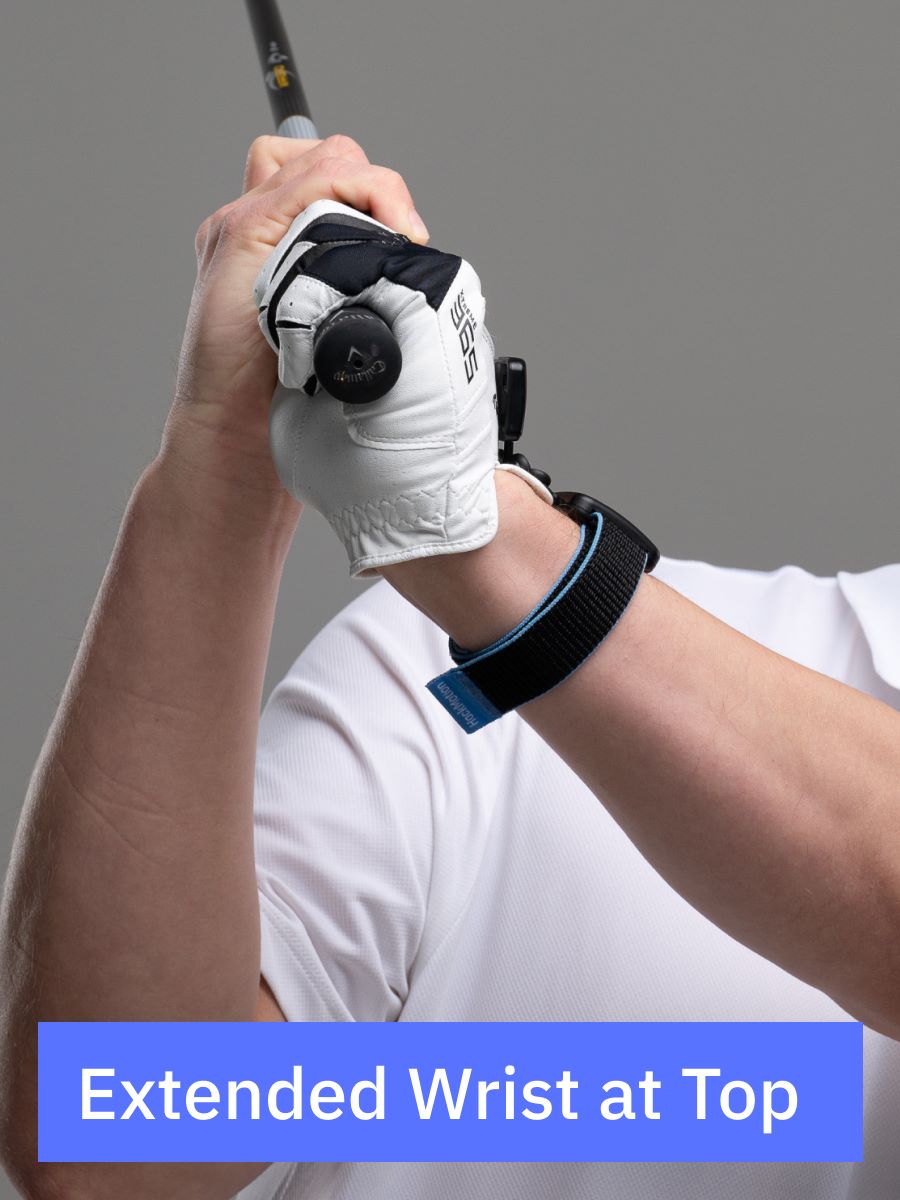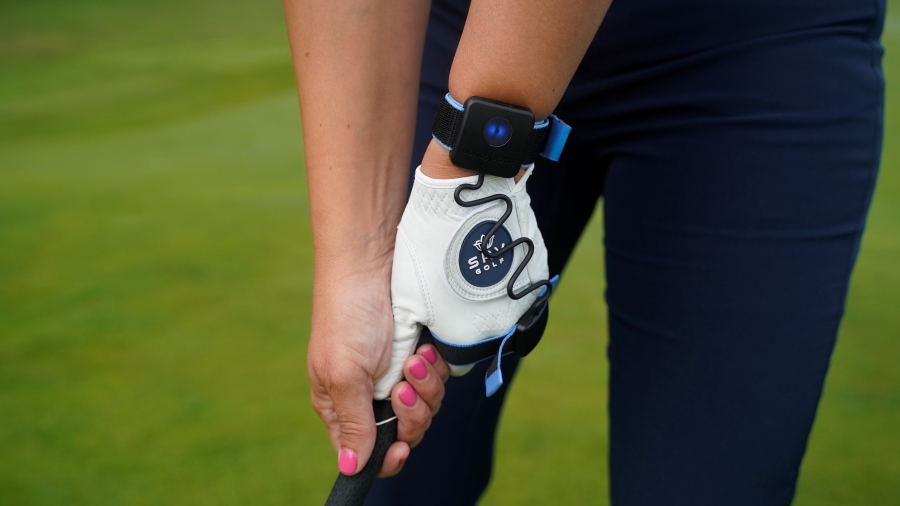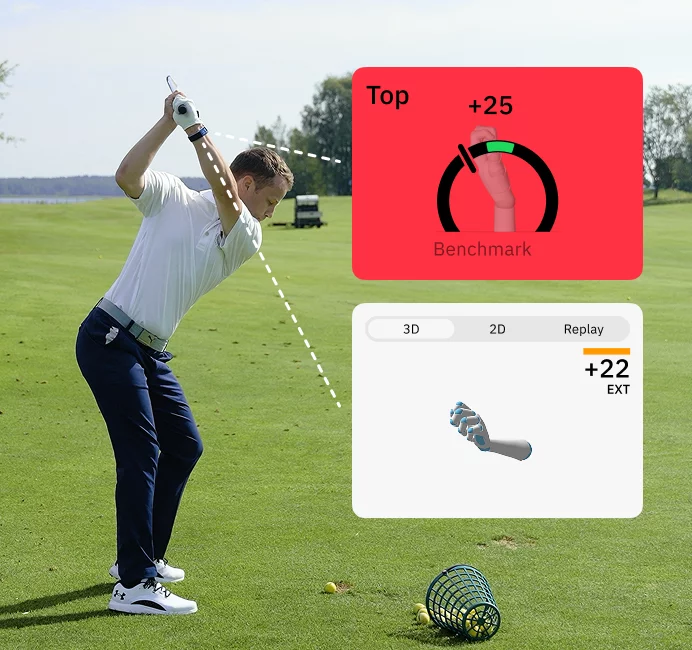Trail Wrist Role in Golf – The Holy Grail of Great Ball Striking
At HackMotion, we deal a lot with data from the lead wrist. The lead wrist data is often easier for golfers to see, understand, and feel. However, this doesn’t mean we can ignore the trail wrist completely.
The trail wrist in golf plays a crucial role. Interestingly, the trail wrist is also your dominant wrist, which can sometimes help narrow down performance issues and fixes related to its position.
After analyzing more than 1,000,000 swings from both amateur and professional golfers, we’ve identified clear patterns in how the trail wrist functions.
Let’s take a closer look at the trail wrist’s role in golf and see how applying this information can help improve your ball striking.
Trail Wrist Role in Golf Swing (Key Takeaways)
If you don’t have time to read our complete guide on how the trail wrist works in the golf swing here are some of the most important takeaways:
- The trail wrist should gain extension in the downswing and keep it through impact.
- It works in the opposite direction of the lead wrist (trail extends while lead flexes) to square the clubface.
- At impact, the trail wrist is typically 10–15° more extended than at address.
- Losing extension too early often leads to scooping, flipping, and loss of power.
- HackMotion lets you measure and train trail wrist angles in real time, using either wrist for instant feedback.
If it’s easier for you to see a video of how the trail wrist works in your game, here is a complete guide that will ensure you are on the right track.
Contents
Optimizing Trail Wrist Movement in Your Golf Swing
Keep the Trail Wrist Extended Through the Swing
With the lead wrist, the goal in the downswing is to remove extension so the clubface can square. The trail wrist works oppositely; it should gain extension as you move from the top of the backswing into impact.
At the top, the trail wrist should already be slightly cupped. As you start down, feel that cup deepen.
By the time the shaft is parallel to the ground in the downswing, the trail wrist should be at or near its maximum extension. This position should carry through impact, allowing the lead wrist to stay flexed and the clubface to remain square.
A good feel for this move is to imagine pushing the back of your trail hand toward your forearm as you start down and holding that angle into the strike.
If you lose the extension too soon, the clubface will open and you’ll be forced to square it with your hands instead of your body rotation.
Rotate the Body as the Trail Wrist Extends
One of the reasons elite players look so effortless is that they don’t waste the downswing trying to square the clubface. They’ve already set it at the top.
A properly extended trail wrist at the top of the swing keeps the face in a strong position, which means the body can rotate freely through impact with full speed and power.
If the trail wrist is flat or flexed instead, you’ll spend the downswing correcting the clubface rather than delivering the club with rotation. That often leads to timing issues and a loss of distance.
Set the trail wrist in a slightly cupped position at the top, confirm the clubface is square, and then focus on rotating your chest toward the target while maintaining that extension.
When you do this, the lower body can drive the downswing, the arms and club can follow naturally, and you’ll be able to strike the ball with both speed and consistency.
Let the Trail Wrist Extend at Impact
Your trail wrist must stay extended as your golf club moves through the impact position. A trail wrist extended through impact lets you get more power and keep the clubface square.
On average professional golfers have 10-20 degrees more extension at impact than their address position.
Wearing the HackMotion can help you see where your wrists are at setup, how they change through the swing, and what they are at impact again.
To get a general idea of what this looks like, grip a golf club and notice how your trail wrist may be slightly extended or flat.
As you swing back in slow motion, does that position get more extended, or does it stay flat? You’ll want to see a little extra extension and then even more as you swing down through the golf ball.
Common Mistakes in Amateur Swings
When the trail wrist isn’t working correctly, the result is almost always the same — weak, inconsistent contact and a loss of distance.
Two issues come up more than any others:
- Premature uncocking (scooping): Letting the wrists release too early in the downswing, which removes trail wrist extension before impact. This causes thin or high, weak shots.
- Excessive flexion: Moving the trail wrist into a flexed position too soon, opening the clubface and forcing you to save the shot with last-second hand action.
Fixing these patterns starts with learning to maintain trail wrist extension until after the strike, allowing the body to rotate and the clubface to square naturally.
Practical Drills for Improving Trail Wrist Motion
Finding a drill that works for you is the best way to improve your wrist position in golf.
Here are a few drills, along with HackMotion feedback, designed to help you get your wrists into the correct position and focus on that trail wrist.
Shot Put Drill
Mimic the feel of throwing a shot put with your trail hand to train ulnar deviation and maintain wrist extension through impact.
Shot Put Drill – Step by Step:
- Hold the club in your trail hand only.
- At the bottom of the swing, feel like you’re pushing your palm outward, as if throwing a shot put.
- Keep the wrist extended and lead with your body rotation.
- Repeat in slow swings before moving to fuller swings.
Open Trail Hand Drill
Keeps the trail wrist extended by removing the ability to “throw” or flip the club, forcing better body rotation.
Open Trail Hand Drill – Step by Step:
- Take your normal grip with the lead hand.
- Place your trail hand flat against the side of the grip, fingers extended.
- Swing while keeping the trail hand open, maintaining pressure against the grip.
- Focus on rotating your body to move the club through impact.
3-and-1 Drill
Combines correct trail elbow position with proper trail wrist extension and forearm rotation to square the face without flipping.
3-and-1 Drill – Step by Step:
- Set trail elbow in front of the body (position 3).
- Rotate trail forearm/wrist into position 1 (extended, palm slightly down).
- Maintain this alignment from setup into impact.
- Use small to mid-size swings to ingrain the feel before going full speed.
Motorcycle Drill
Trains both lead and trail wrist control by feeling the “revving” motion that helps close the face and keep it square through impact.
Motorcycle Drill – Master Lead Wrist Flexion in the Downswing
Focus on continuously adding flexion until the club reaches parallel, then smoothly complete your swing.
HackMotion Motorcycle Drill – Step by Step:
- Wear HackMotion on your trail wrist.
- In the downswing, feel like you’re revving a motorcycle, trail wrist extends, lead wrist flexes.
- Set a target range in HackMotion for trail wrist extension at impact.
- Use audio feedback to know when you’re in the correct position.
Why Work On the Trail Wrist vs Lead Wrist?
The trail and lead wrists are important in the golf swing. At HackMotion, we have analyzed more than 1,000,000 golf swings of players, and we notice that since the trail wrist is usually the dominant wrist for the player, sometimes it is easier to focus on.
If you struggle with getting the lead wrist in the right position, try working on the trail wrist for a while and see if it improves your game.
Sometimes, all it takes is a mindset change to see the difference.
FAQs
What does trail arm in golf mean?
Trail arm in golf means the right arm for the right-handed player or the left arm for the left-handed player. As you swing the golf club through the ball, the trailing arm lags.
What should trail wrist do in a golf swing?
The trail wrist in the golf swing will somewhat mirror the lead wrist. On the backswing, the trail wrist will have considerably more extension than the lead wrist.
On the downswing, that extension will increase slightly before decreasing right before impact. Golfers will have more extension at impact in their trail wrist than at the address.
Should the trail wrist be bent at impact?
After analyzing more than 1,000,000 golf swings, HackMotion has helped us determine that extension of the trail wrist at impact is a great position to be in.
With a bit more extension, it’s easier to flex the lead wrist, compress the ball, and improve ball flight and consistency.
Are their perfect trail wrist measurements with HackMotion?
Remember that, just like with the lead wrist, no exact amount of extension or flexion will guarantee your success.
The trail wrist measurements will vary slightly, but you must follow a pattern of adding extension on the downswing and having more extension at impact than you had at the address.
Final Thoughts
Mastering the trail wrist is one of the fastest ways to improve ball striking, add distance, and gain consistency. By learning to add and maintain extension in the downswing, you’ll square the clubface earlier and free up your body to rotate through the shot.
Use HackMotion to track your wrist angles, work through the drills above, and build a repeatable motion you can trust under pressure.
The more you can connect the feel of proper trail wrist movement to real-time feedback, the closer you’ll get to hitting powerful, controlled shots round after round.

